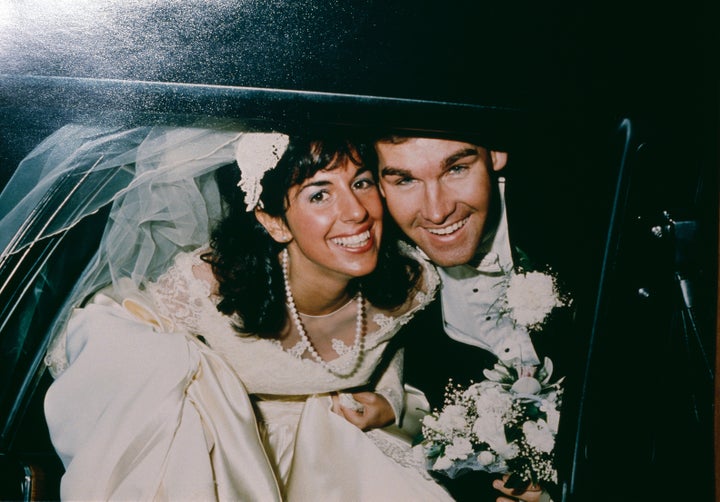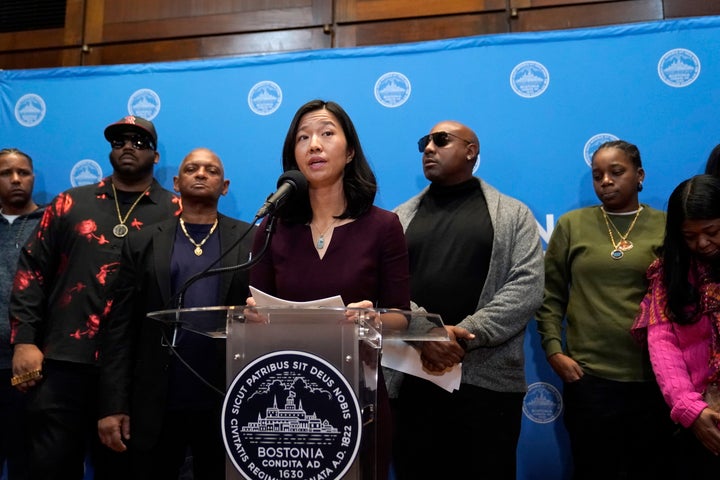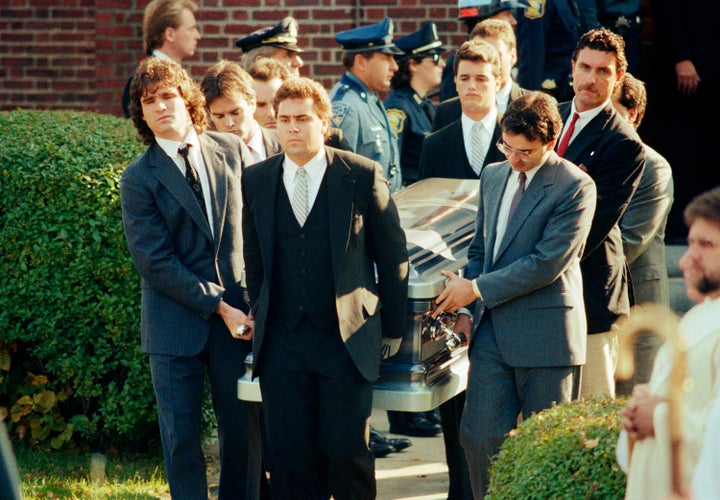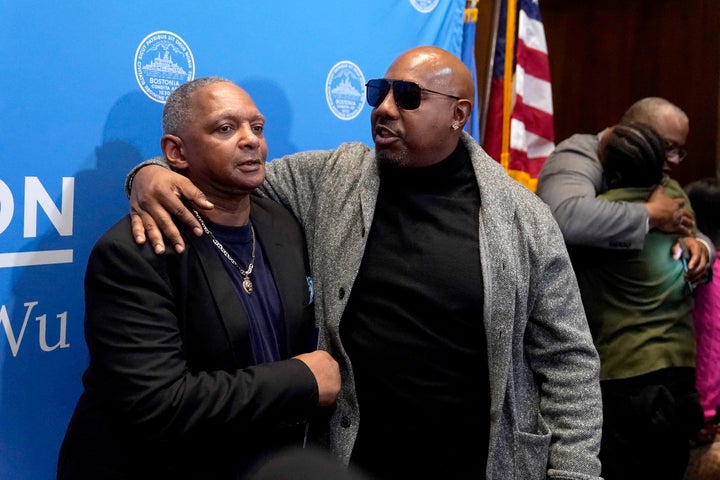This is an excerpt from our true crime newsletter, Suspicious Circumstances, which sends the biggest unsolved mysteries, white-collar scandals and captivating cases straight to your inbox every week. Sign up here.
“A Black man.”
Those were the first words Charles “Chuck” Stuart said, as he laid semiconscious in the back of an ambulance, to a Boston police officer who asked who shot him and his wife on the night of Oct. 23, 1989. Footage of that exchange, and the frantic efforts of first responders to treat his injuries, appears in the opening of HBO’s powerful new documentary “Murder in Boston: Roots, Rampage & Reckoning.”
Stuart was lying. He was the man who killed his pregnant wife and then shot himself. But the police — and later, city officials, journalists and white residents — believed his improbable story of being carjacked by a Black man in a tracksuit after a birthing class. The man, Stuart claimed, forced them to drive to the predominantly Black neighborhood of Mission Hill and fled to a nearby housing project with Carol Stuart’s purse and jewelry, including her wedding ring. Investigators ignored the story’s inconsistencies and disregarded tips and clues that would have implicated Stuart and instead allowed his hoax to ignite smoldering racial tensions in the city and persecute its Black citizens.
A reckoning — also the title of the third and final episode of “Murder in Boston” — came Wednesday morning, when Michelle Wu, the first woman and first person of color to have been elected mayor of Boston, made a formal apology at a news conference at Boston City Hall.

Calling the apology “long overdue,” Wu acknowledged that “the city launched a systemic campaign targeting Black men” based on Stuart’s lies.
“There was no evidence that a Black man had committed this crime,” Wu said. “But that didn’t matter because the story was one that confirmed and exposed the beliefs that so many shared, from residents and reporters to officers and officials. At every level and at every opportunity, those in power closed their eyes to the truth because the lie felt familiar. They saw the story they wanted to see. And as a result, our Black residents suffered.”
As demonstrated by “Murder in Boston” and a massive Boston Globe investigation that paralleled the documentary, racial tensions had been simmering in the city since the implementation of desegregation busing in 1974. The program attempted to address disparities between deeply segregated school districts by busing students to different schools. White residents responded with violent protests, their intensity captured in contemporaneous black-and-white film footage that provided important context for the upheaval in the city following Stuart’s hoax. (The Oscar-winning 2017 documentary “O.J.: Made in America” had similarly contextualized the celebrity murder trial within the racial tensions in L.A. after the 1991 police beating of Rodney King and the 1992 uprising that broke out across the city after the officers involved were acquitted.)
Other archival film footage, news reports and TV interviews — most poignantly with then-suspect Willie Bennett’s mother amid the wreckage of her home after a violent police raid — make watching “Murder in Boston” a visceral experience, but its greatest strength lies in its present-day reflections by journalists, former city officials, Black activists and relatives of Willie Bennett.
One person who did not express remorse in the present-day interviews: Billy Dunn, a former Boston cop who still defends the police department’s actions and expressed his support for racial-targeting measures like warrentless “stop and frisk” actions.
But at Wednesday’s news conference, Boston Police Commissioner Michael Cox apologized for him. He criticized the Boston Police Department’s “poor investigation and overzealous behavior” and “lack of professionalism” during the Stuart investigation.

It all began with a 911 call.
“My wife’s been shot, I’ve been shot,” Stuart told 911 dispatchers in a rambling call that played out like an action thriller as authorities tried to locate him.
Stuart seemed to fade in and out of consciousness as he told police about the fictional hijacking. Their attacker, he claimed, had shot Carol, who was more than seven months pregnant, in the head; he had “ducked,” he said, and suffered a nearly fatal shot to his stomach. Stuart sounded weak and confused about where he was. The dispatcher, who could hear sirens in the background, directed squad cars to turn their sirens on and off to pinpoint his location.
A camera crew for the CBS show “Rescue 911” happened to be doing a ride-along that night with the Boston Emergency Medical Service supervisor and were among the first to arrive. “Murder in Boston” shows the gruesome footage they captured at the scene — Carol Stuart slumped to the side in the passenger seat, her head, face and shirt bloodied; her husband beside her, grimacing in pain — and later showing Stuart in the ambulance and hospital. Carol was pronounced dead that night; their son, delivered by C-section, died 17 days later.
On Jan. 4, camera crews were also there when Stuart’s body was pulled out of the Mystic River. He killed himself after learning that his brother admitted to police he had met Stuart at the prearranged crime scene, took a bag from Stuart containing the gun, Carol’s purse and jewelry, and disposed of its contents.

Much of Chuck’s story didn’t add up from the start, but city leaders, investigators and journalists were interested in another narrative: The Black Man Did It. Police raided Black neighborhoods, harassed and assaulted Black people without cause or provocation and wrongfully arrested two Black men, Alan Swanson and Willie Bennett, accusing them of killing Carol Stuart and her son. Bennett became the ultimate scapegoat, thanks to a police-coerced witness statement and Stuart’s false identification, and he remained so even after authorities and even journalists were forced to admit that shoddy police work and a single-minded zealousness, fueled by racism, had resulted in the wrong man’s arrest. Bennett said the accusation ruined his life, his pain magnified by Boston officials’ refusal to apologize to him.
On Wednesday, his nephew, Joey Bennett, accepted the city’s apology on his behalf, as well as on behalf of Swanson, who stood behind him at the news conference.
“We just want to express our gratitude to Mayor Wu for the apology, her courage in acknowledging the wrongdoings of the Boston Police,” Joey Bennett said. “Offering a sincere apology is something we deeply respect and appreciate. It takes great humility and courage to acknowledge someone else’s wrongdoings and to try to make amends. Your apology is accepted.”


